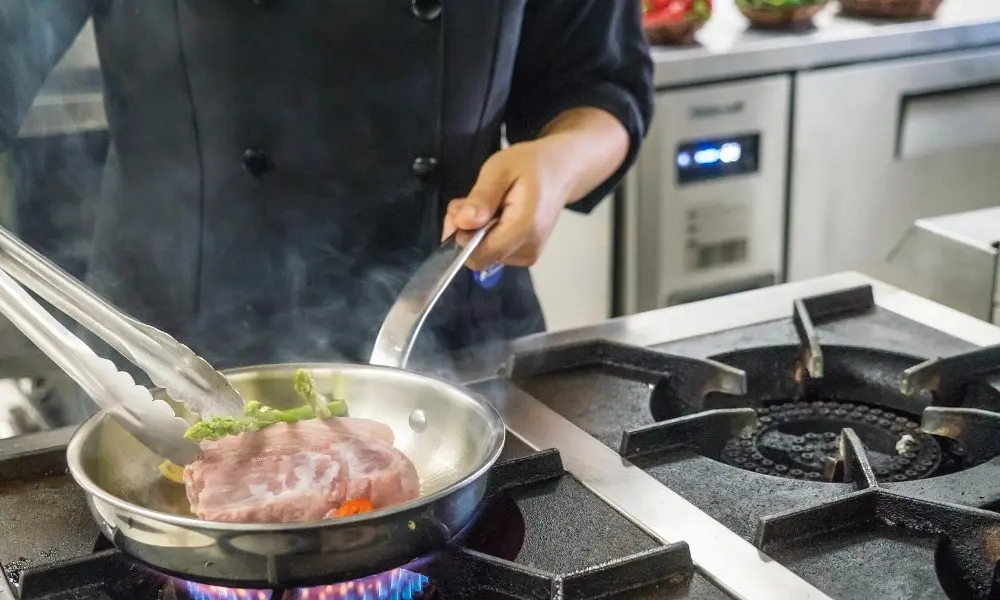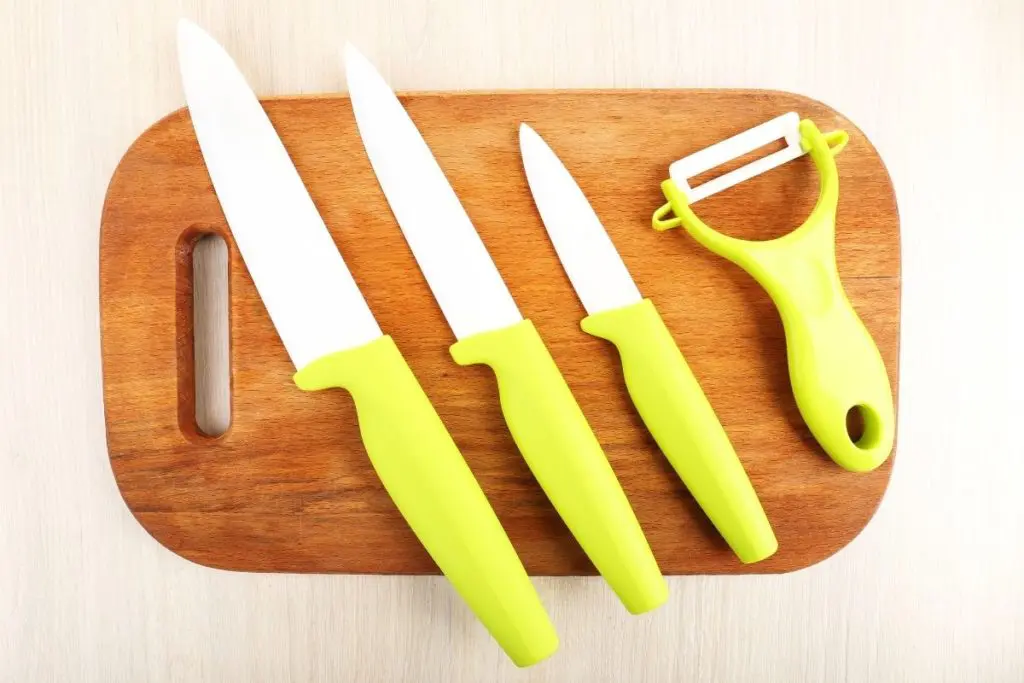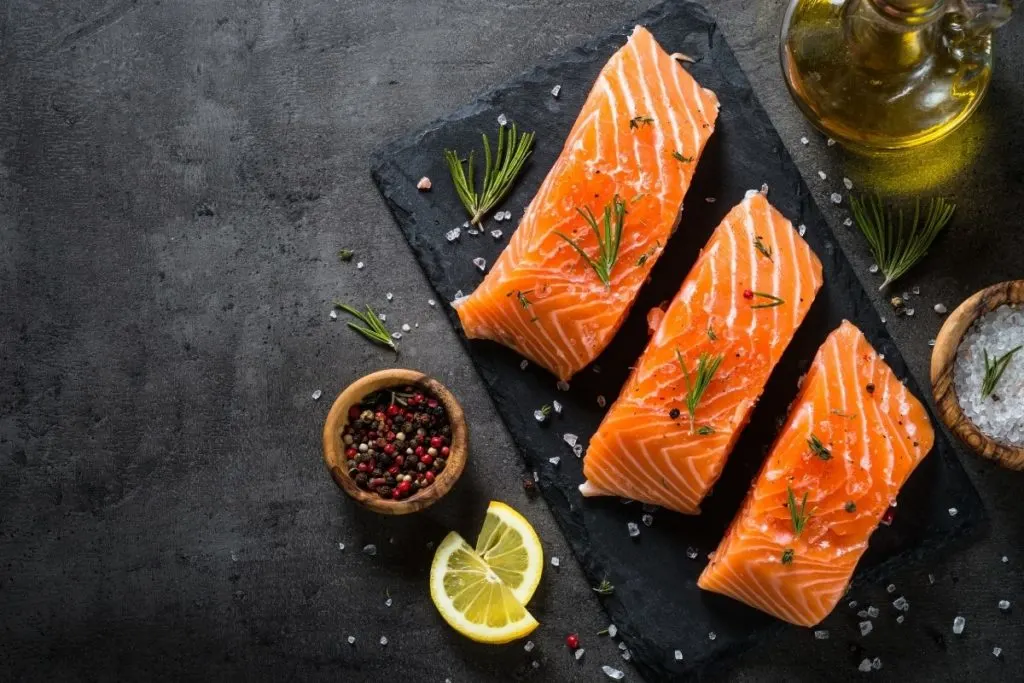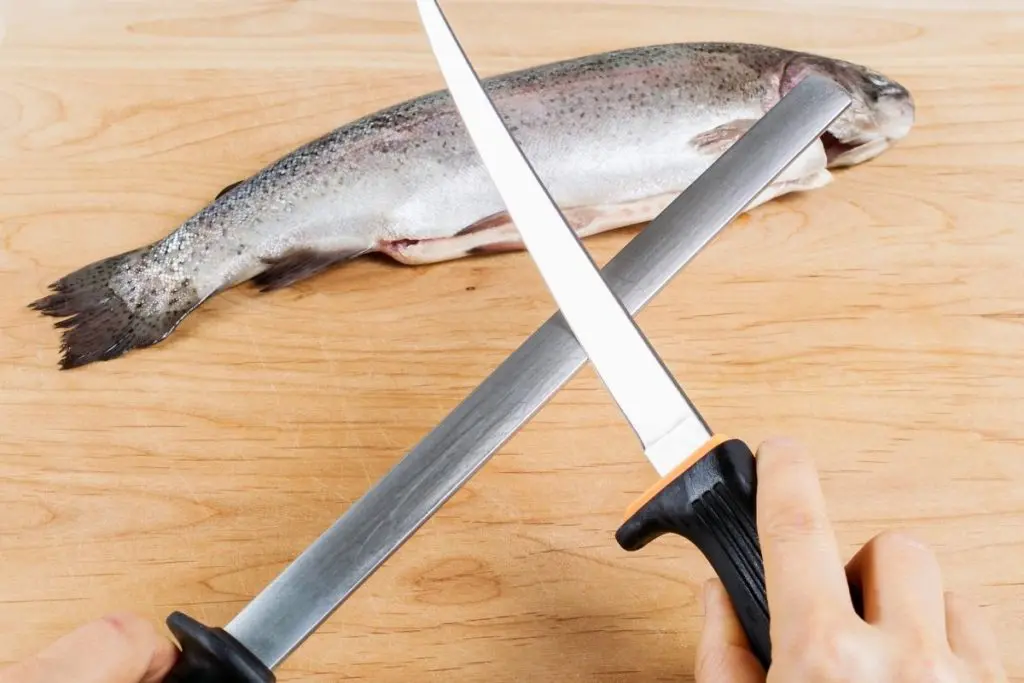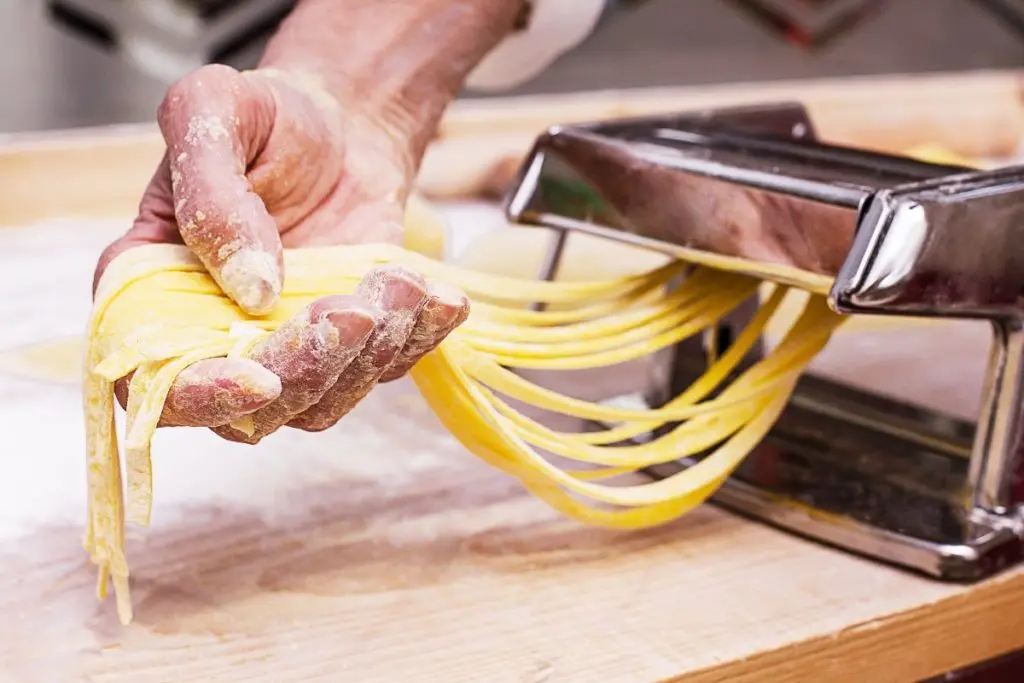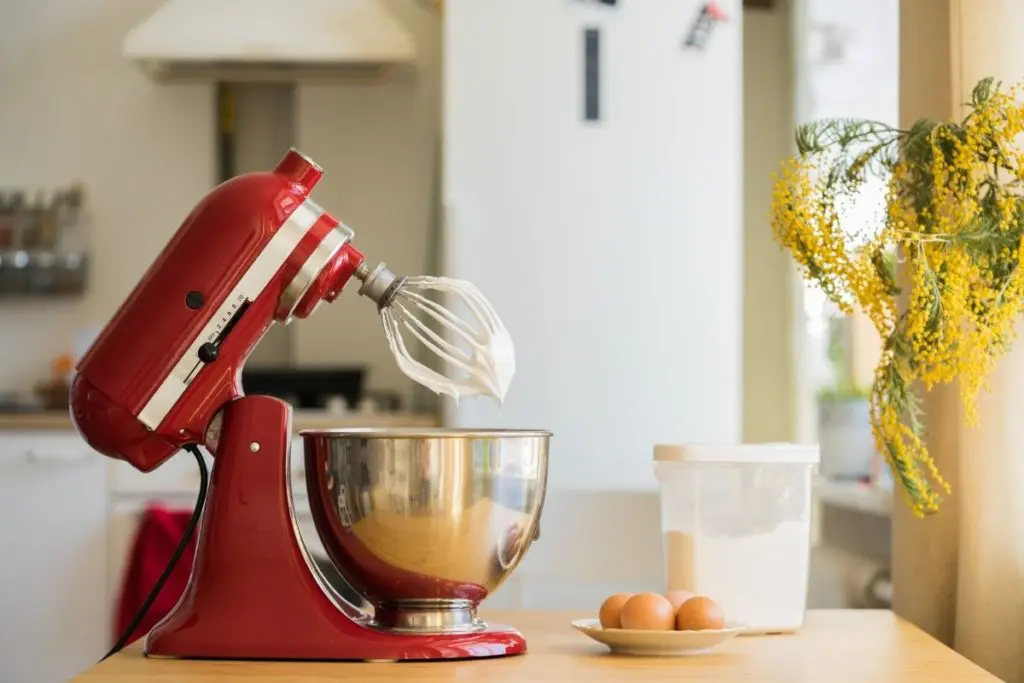One of the biggest decisions for the home cook is what kind of pan to use. The most common comparison is between stainless steel vs. nonstick cookware. Nonstick is the most popular choice — it’s easy to clean, easy to use, and can cook almost anything. Stainless steel feels like the fancy choice, but it can be difficult to work with, and may not seem worth the effort. But choosing which to use should involve more than just which one you like best; it should include what you’re trying to cook.
The right pan can make or break your recipe, and can even make or break your pan — if you let your nonstick pan get too hot, you can ruin the nonstick coating and make the pan all but useless. On the flip side, if you don’t let your stainless steel pan heat up before you start cooking, your food will crust to the pan so badly you may have to throw the whole thing in the bin.
So how do you know which one to use? Let’s start with some basics.
Cooking with Stainless Steel vs. Nonstick Pans: Comparison Table
Here’s a quick overview of the primary differences between stainless steel & nonstick pans.
| Stainless Steel | Nonstick |
| Requires cooking oil or butter to prevent sticking | Nonstick surface doesn’t need anything to prevent sticking |
| Best used on high heats | Suitable only for low-medium heats |
| Oven-safe | Not oven-safe |
| Good for searing, browning, charring, and crisping | Will not sear, brown, char, or crisp |
| Highly durable, resistant to chipping | Fairly durable, may chip or lose nonstick coating at high heats |
| Long life | Shorter life |
| Can be heavy | Lightweight |
| Potentially difficult to clean | Easy to wipe clean |
| Never dishwasher-safe | Sometimes dishwasher-safe |
| Great heat conductor, even heat distribution | Poor heat conductor, usually even heat distribution |
What Is Stainless Steel Cookware?
When a pan label features stainless steel, it means that it is:
- Made from stainless steel
- Has no coating whatsoever
Stainless steel cookware is exceptionally durable. Where other pans may char or lose their coating at high heats, stainless steel will give you a beautiful sear. It can safely go in the oven to finish off a luscious steak. Without a coating, the pan retains little bits of food that can be useful to make a delicious pan sauce by deglazing with wine, water, or broth.
But stainless steel cookware is notorious for being finicky, difficult to work with, and best left to the professionals. You have to know how to use it, and what to use it with if you want to get satisfying results.
What Is Nonstick Cookware?
Nonstick pans can feature different materials. But what makes them “nonstick” is their nonstick coating over the cooking surface. When they first became popular, this coating was typically either polytetrafluoroethylene (also known as Teflon) or perfluorooctanoic acid (PFOA). As you’ve probably heard, these two chemicals have come under intense scrutiny in recent years. Though there’s no definitive proof that they are bad for you, it’s easy to avoid both of them with ceramic nonstick pans.
Whatever kind of nonstick cookware you have, they are pretty universal when it comes to the rules:
- Cook on low/medium heats
- Avoid sharp metal utensils that will scratch the coating
- Nonstick pans are great for a lot of your basic meals, like eggs, pancakes, veggies, and delicate fish. They don’t require any fancy knowledge to use and are stupid easy to clean.
Cooking with Stainless Steel Cookware vs. Nonstick Cookware
The cooking experience is one of the main reasons at-home chefs prefer to use nonstick cookware. They aren’t likely to overheat, so you don’t have to keep a close eye on them while cooking. You also don’t have to preheat nonstick cookware, meaning you can dump in food, butter, or oil the second you put it on the burner. In fact, we recommend this, as preheating a nonstick pan can mess with the nonstick coating. This could both destroy your meal and your pan. Nonstick does take longer to heat up than stainless steel, though. Even though the food gets in the pan faster, you’ll still end up waiting.
The aforementioned butter and oil are optional when it comes to nonstick. Technically because you don’t need any kind of lubricant to prevent your food from sticking, foods won’t crust or char to the nonstick surface. You can easily flip your over-easy eggs or pancakes on a quality nonstick pan without all the added grease.
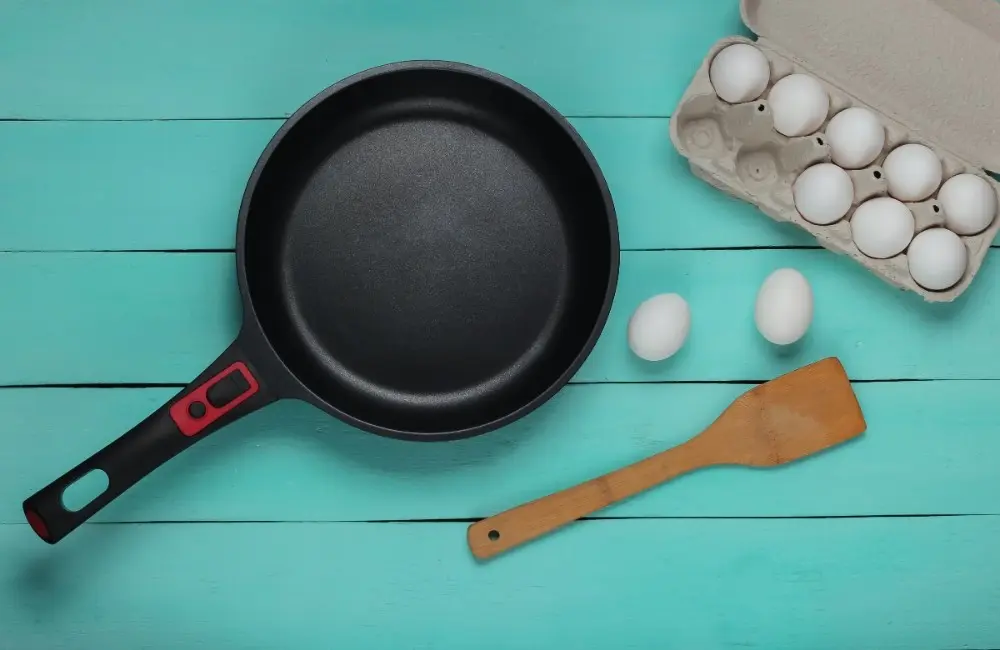
Heating Techniques
But since you can’t use nonstick on higher heats, they aren’t so great for things that you need to brown, sear, or crisp up. They also can’t go in the oven. While they will deglaze with wine or broth, you don’t get all those leftover bits of food that make the glaze so, so good.
On the other hand, stainless steel cookware can be used at extremely high heats over and over again without any damage. They’re oven-safe, so you can start your steak on the stove for a nice sear on both sides and then finish it off in the oven until you get the perfect pinkness in all the way through. You can also get a delicious glaze or gravy from your stainless steel pan. All those yummy little food bits that stick to the surface will come loose during the deglazing process.
But, no matter what you’re making, stainless steel pretty much always needs to be preheated. If you put food on cold or room-temperature stainless steel and then heat it, you’re just asking for the food to glue itself to the pan. You’ll also generally need liberal amounts of cooking oil, butter, or lard to further prevent sticking.
When your food is cooking, you’ll need to keep a close eye on it; stainless steel heats up very quickly and evenly across the entire surface. Even if your burner is at a steady temperature, the pan itself will continue to grow hotter. You may have to play with the temperature settings a little throughout the process to keep it even until your meal is done.
Verdict: Nonstick pans are easier to cook with because they don’t overheat quickly, are less likely to burn your food, and don’t have to be preheated or lubricated with oils.
Winner: Nonstick
Versatility of Stainless Steel Cookware vs. Nonstick Cookware
Nonstick cookware advertises that it can be used for any cooking adventures, whether it’s morning breakfast or a five-course dinner party. This claim is technically accurate. You can cook pretty much anything in a nonstick pan —but that doesn’t mean you should.
Browning, searing, charring, and crisping all have to be done at high heats, meaning you’ll need to turn to stainless steel. While you could cook a steak or a blackened fish in your nonstick pan, you won’t get the heightened flavor that comes from searing the outside or actually “blackening” your fish.
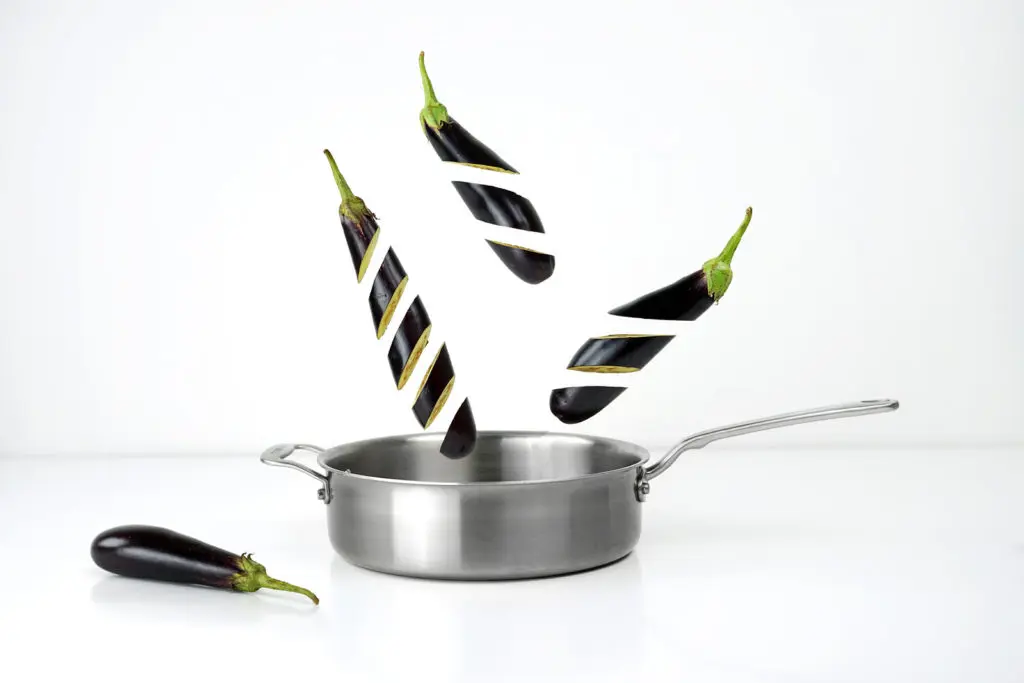
Stainless steel is also oven-safe. You can start on the stove and transition to baking. This method allows you to get your food fully cooked on the inside with a crispy yet not burnt exterior.
What Types of Foods are Best in Nonstick or Stainless Steel Pans?
Nonstick pans are usually suitable for delicate foods, like eggs or white fish. Since the food won’t stick, it’s easy to flip, turn, and serve up without damaging or breaking. But that doesn’t mean you can’t make these foods with stainless steel. Eggs can be delicious in a stainless steel pan, so long as you use enough bacon grease or butter to smooth the way. Fish is trickier, but with the right sauce, you can still get that flakey texture, and a crispier crust to boot.
Both nonstick and stainless steel pots can be used for making soups, sauces, and boiling. However, stainless steel has a better reputation for evenly distributing heat and getting all the flavors throughout the entire liquid.
Verdict: Nonstick can be useful for a wide range of foods, but stainless steel has the most versatility while maintaining the best flavor.
Winner: Stainless Steel
Cleaning Stainless Steel Cookware vs. Cleaning Nonstick Cookware
Easy clean-up is one of the most significant selling points when it comes to nonstick cookware vs. stainless steel. Since the food doesn’t stick to it, washing takes virtually no effort. Most pans can simply be wiped down with a soapy rag or sponge and voila. Some nonstick pans are even dishwasher-safe!
Cleaning stainless steel, on the other hand, is notorious for being difficult. Most people’s experience with stainless steel is accidentally charring food to the pan and then spending hours scrubbing and soaking trying to get it off. But when used properly, stainless steel isn’t too hard to clean. If you use enough lubricant, your food shouldn’t permanently stick to the pan, and a little scrubbing will get the job done.
Verdict: Stainless steel isn’t too hard to clean when used properly, but nonstick is universally easy to wipe clean.
Winner: Nonstick
Maintaining Stainless Steel vs. Nonstick
To ensure your cookware lives a long, happy life, there are a few different things you’ll need to do.
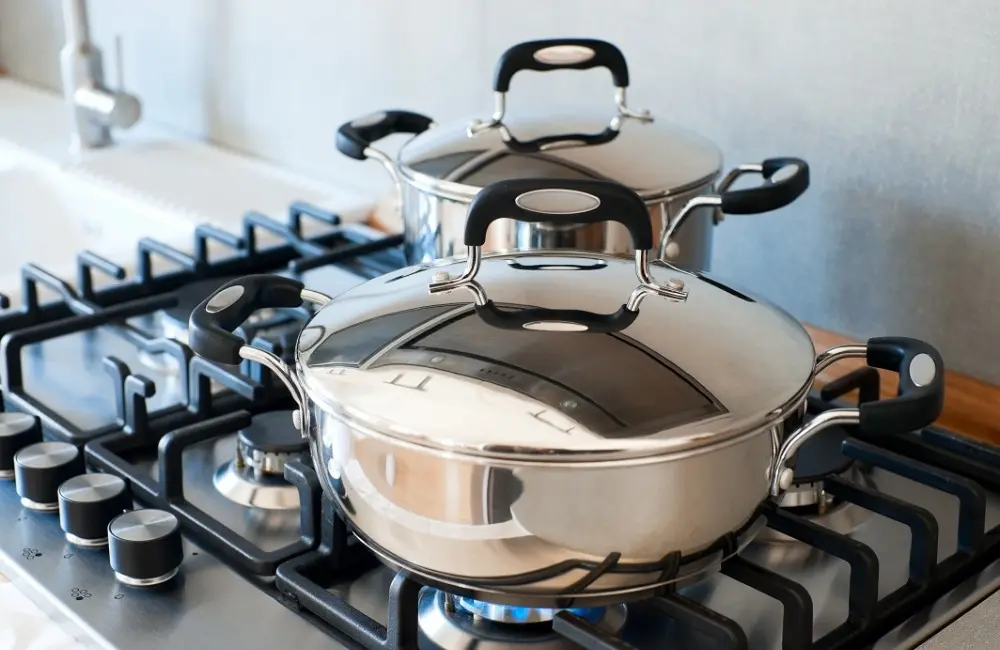
Preheating
For stainless steel, preheat your pan before you start cooking to prevent food from sticking to the surface; you may also need to put refrigerated food on the counter until it warms to room temperature before you put it on your pan. When boiling water for potatoes or pasta, you shouldn’t add salt until after it is heated. Waiting prevents “pitting corrosion,” which basically means a bunch of tiny, permanent holes in the steel.
Cleaning
Before cleaning a stainless steel pan, let it first cool down to room temperature. If you need to soak it in soapy water to loosen up any charred bits, use warm to hot water so the pan can cool down slowly and evenly. Using warm water prevents the metal from warping or damaging. Never use physically and chemically abrasive cleaners such as steel wool, Brillo pads, bleach, or chlorine. They will scratch and otherwise damage the steel.
Nonstick pans usually wipe clean easily, but you’ll still need to avoid physically and chemically abrasive cleaners like steel wool, Brillo pads, bleach, or chlorine. Double-check your pan before sticking it in the dishwasher. Some nonstick pans are not dishwasher-safe. Ignoring the instructions may damage the nonstick coating or warp the metal.
Utensils
To avoid scratching the nonstick coating on nonstick cookware, never use metal utensils during the cooking or cleaning process. While you don’t need to preheat nonstick pans, you will need to go ahead and put in your oil or food on the cold pan to prevent dry-burning, which can burn through the nonstick coating.
Verdict: Both nonstick and stainless steel cookware have a variety of considerations to keep in mind to ensure a long life.
Winner: Tie
Which Is Best: Stainless Steel vs. Nonstick?
While it would be nice if there were a clear winner between stainless steel vs. nonstick. The truth is, it all comes down to what you’re cooking. Most professional cooks agree that every kitchen should have both, so you’re prepared to make anything your heart desires.
Here are a few specifics of when to use one over the other:
Stainless Steel
- With high heat
- Sautéing with oil/butter/lard
- Deglazing for gravies, sauces, or glazes
- For searing, browning, charring, and crisping
Nonstick
- With lower/medium heats
- Delicate foods like eggs and fish
- Sautéing with little to no oil/butter/lard
And remember, no matter which type of cookware you choose, the secret behind every great cook is self-confidence!
Further Reading
